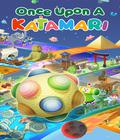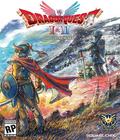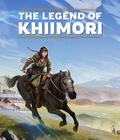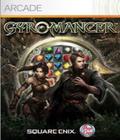Apparently, Square Enix must have gotten upset when Puzzle Quest debuted and decided to steal some of their RPG thunder. That's about the only reason I can fathom the company stepping away from work on the next 17 Final Fantasy titles in order to develop and release Gyromancer, a puzzler that is clearly meant to appeal to the same fan base who gobbled up Puzzle Quest a couple of years ago. Square Enix isn't going it alone, however, as they also recruited PopCap Games to help them come up with pure digital heroin, and the resulting collaboration is quite a game, more than ready to give anything else out there a run for its money.
Gyromancer places players in the shoes of the imperial mage Rivel, who is sent into the nearby enchanted forest to hunt down a group of separatists who attacked and killed the Count and Countess. Rather than being a typical spiky-haired teen like most protagonists in Square Enix games, Rivel is a mighty summoner, able to conjure up ferocious beasts to do battle with any who oppose him. It's sort of like ye olde Pokémon, but the creatures are far more likely to tear you limb from limb than they are to travel happily with you through a meadow.
In a rare miss from Square Enix, the story of Gyromancer is told very poorly, with a lot of missing information and useless characters peppered throughout. There seems to be a rich mythology driving the story line, but players never get a chance to glimpse it or understand what it is that drives the conflict. Antagonists pop up and attack with no motive, and even the main bad guy is poorly fleshed out, leaving players to wonder what led him to ever attack the nobility in the first place. It's clear the developers had a very clear picture of the world and its politics when they were creating the story; it's just too bad they never saw it fit to share that information with the players.
Gameplay is ripped straight out of Bejeweled Twist, right down to the color and shape of the gems. This is yet another "match three and create combos" game, but, quite literally, with a twist. Rather than swapping one gem with another, players must rotate sets of four gems clockwise in order to create matches. For those who haven't experienced the mechanic in PopCap's franchise, it's a very different way to approach things, but ultimately a lot of fun. It may take newcomers a couple of rounds before they get it down cold, but once you do, you'll wonder how you can ever go back to standard gem-switching.
Where the game begins to mirror Puzzle Quest is how the matched gems factor into attacking enemies. Each beast has special abilities, and making matches allows you to fill your gauges until an ability gem pops up on the board. Matching that gem will unleash your attack, damaging your foe and oftentimes substantially altering the status of the board. You must be careful, though, as every time you make a match, your opponent's ability gauges also fill, and once they're ready to attack, countdown gems will show up. Let the counter reach zero without removing the gem, and it's your friendly beast that will be injured.
Deepening the experience is the fact that each beast is tied to an elemental affinity that has a significant impact on battle. Most elements are strong against beasts of some affinities and weak against others, and since you're only allowed to take three fighters into each map, it's important to set up your roster to be ready for anything. Furthermore, matching gems of your own affinity boosts your ability gauges quickly, while matching gems of your opponent's affinity stops him from gaining ability points at all. Thus fights gain a basic level of strategy, but nothing so deep that casual gamers won't be able to keep up with the necessary tactics.
What really makes this particular combat method tick is that it's far less frustrating the Puzzle Quest's turn-based combat. In that game, it sometimes felt like AI opponents were omniscient, able to set up matches and create cascades that probably never should have happened. Anyone who's played the franchise can likely share many stories of expletive-laden rants or shattered controllers due to certain enemies managing to wipe them out with one long string of suspiciously good luck. Now that element has been removed, and the player is responsible for victory or failure, as it should be. That's not to say luck doesn't come into play at all, since the positioning of ability gems can make or break any match, but the times you do lose, you can almost always trace it back to poor decisions you made, not godlike AI.
Gyromancer is a fun and highly addictive game, but it also possess its fair share of shortcomings. The art on each beast is amazing, and their portraits are filled with loving detail. Unfortunately, these portraits are all you'll see, as there are no character models, animations or anything else. Attacks are executed through a quick screen shake and some damage numbers appearing on-screen, that is all. Storytelling is handled the same way, with static portraits of characters and box after box of text. Even though the artwork is quite stunning, it's basically wasted on the most boring method of presentation possible.
Perhaps the game's biggest shortcoming is the lack of any sort of multiplayer support. While the story is quite lengthy without being able to play online or even locally against other summoners and their beasts, there's little reason to revisit this title. Essentially, the game is tons of fun for the 15 hours or so it will take to get through the campaign, and then you'll likely never touch it again.
Gyromancer manages to present itself as a worthy rival to Puzzle Quest but doesn't quite pack in enough to make it the new favored franchise in the genre. The Bejeweled Twist mechanics and Square Enix sensibility combine to create a fun, gorgeous game, but the poor story and lack of multiplayer really hamper the experience. If you're a Puzzle Quest fan, then this is a great companion title, but if you're looking for the next great opus from Square Enix, it seems you'll have to wait for Final Fantasy XIII.
Score: 8.0/10
More articles about Gyromancer











 Gyromancer is a new puzzle-RPG developed in collaboration between Square Enix and PopCap. With a blend of puzzle elements from the PopCap Games puzzle hit Bejeweled Twist™ and the RPG mastery of Square Enix, Gyromancer is an all-new experience that defines the puzzle-RPG genre.
Gyromancer is a new puzzle-RPG developed in collaboration between Square Enix and PopCap. With a blend of puzzle elements from the PopCap Games puzzle hit Bejeweled Twist™ and the RPG mastery of Square Enix, Gyromancer is an all-new experience that defines the puzzle-RPG genre.





